Restoring Richmond’s Tree Canopy
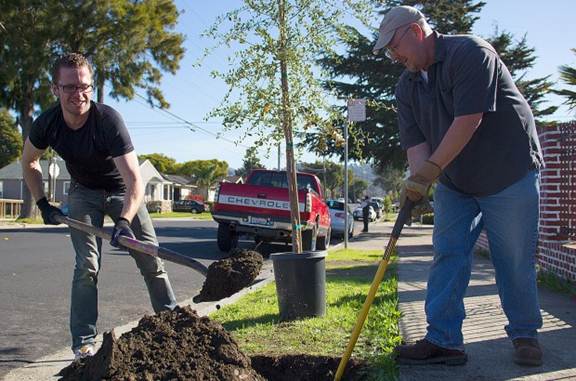
Self proclaimed local trouble maker, Felix Hunziker (right), said he wanted to improve the beauty of his neighborhood and he did just that with the help of German scholar, Marc Scheuten (left). (Photo: Justin Pye)
By Justin PyePosted November 8, 2012 1:40 pm
W hat is the solution to Richmond’s environmental woes? Trees, some say.
More than one hundred trees have been planted in Richmond soil in the last month and last weekend nearly 60 volunteers transplanted 30 trees to Roosevelt Avenue and surrounding streets.
Richmond Trees and Groundwork Richmond hosted Saturday’s harvest festival, complete with art and crafts, live entertainment — and even a giant radish — to set the tone of community and environmental awareness. PG&E representatives shoveled with Watershed Project interns and Police Chief Chris Magnus shook hands with adolescent volunteers as neighbors watched their street become greener.
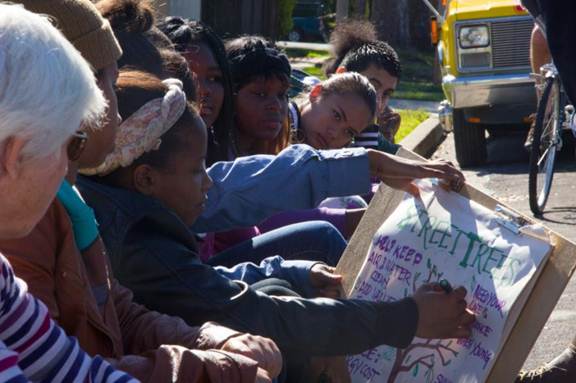
Richmond’s history as a post-industrial and post-military city has taken its toll on the natural landscape, and while sticks and leaves may not create world peace, neighborhood foliage has benefits including increasing property value, reducing air pollution, and even slowing traffic.
Richmond Trees founder Teri Katz said, “one tree can release enough oxygen to support two people for a year,” which is vital to a city with a tree canopy that’s lower than the 40 percent average for a healthily green city.
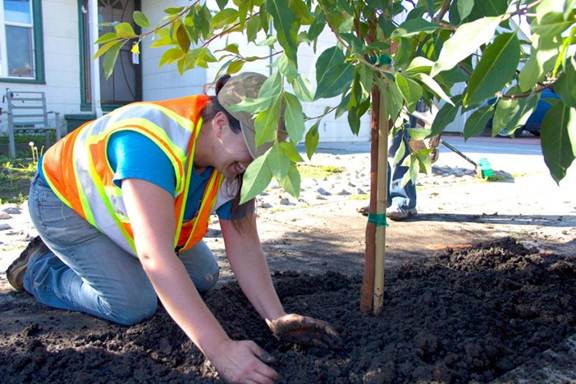
“P ower lines and trees don’t mix,” said Davey Trees’ Supervisor Mike Downey, who was on hand to educate people on the importance of planting the proper trees for their yards.
Volunteers were trained on how and where to plant trees. They then relayed the information to homeowners who were asked to water their new trees once weekly for the first few years in exchange for shade and clean air.
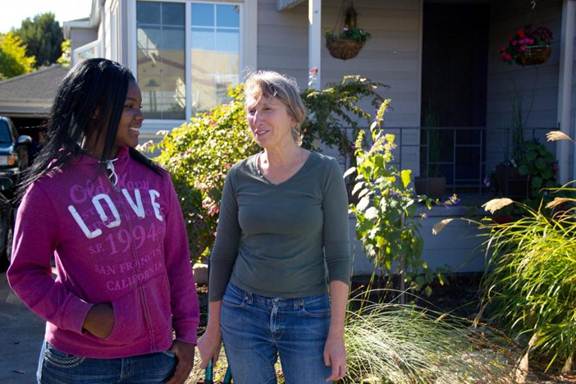
L isa Bruzonne (above, right), who said she was excited to finally receive her tree after two years on the waitlist, took a break from trimming her yard to talk to Youthworks volunteer Jashon Sherrill (above, left) who raved about having helped plant 20 redwoods at Kennedy High.
“At first I didn’t know how to plant a tree,” Sherill said, but after training she smiled and said, “It’s a cool experience.”
The ability to work in their own community made this opportunity even more significant to two other Youthworks volunteers LaMajhane King and Sheena Konn (below, left).
“When I walk past I’ll say, ‘I did that, that’s my tree,’” King said.
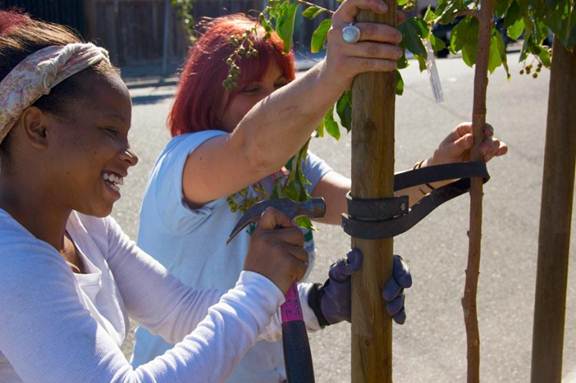
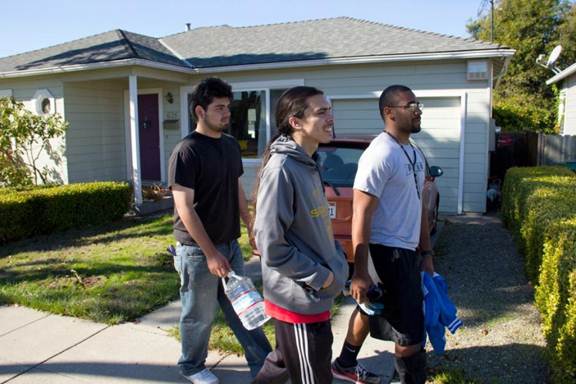
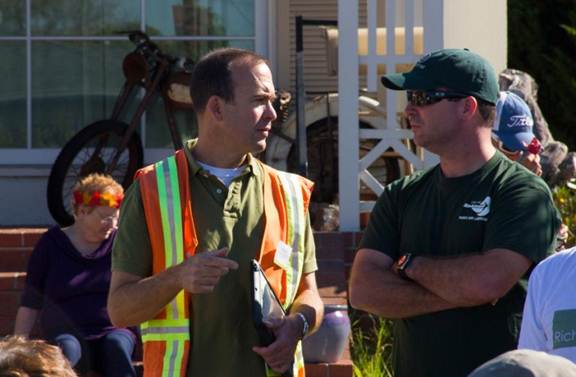
L andscape architect JC Miller (left) knows Richmond’s trees – roughly all 28,000 of them. He is a part of a team that has been counting, mapping and tracking trees in the city to help assess Richmond’s arbor needs.
“You managed to plant them faster than I can count them,” Miller said to the volunteers as they ate well-deserved snacks after the morning of planting.
Chris Chamberlain (right) from Richmond Parks and Recreation said he looks forward to planting even more and told attendees to cherish their individual roles as “guardian of the forest.”
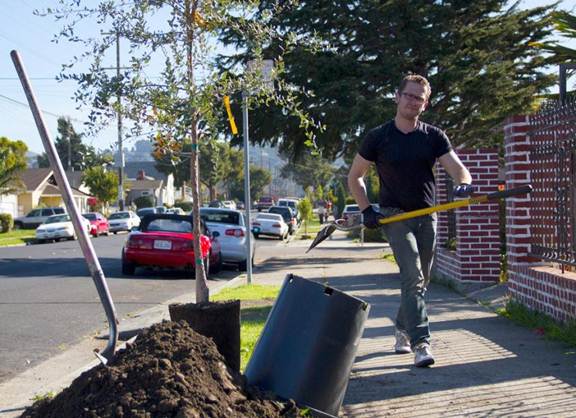
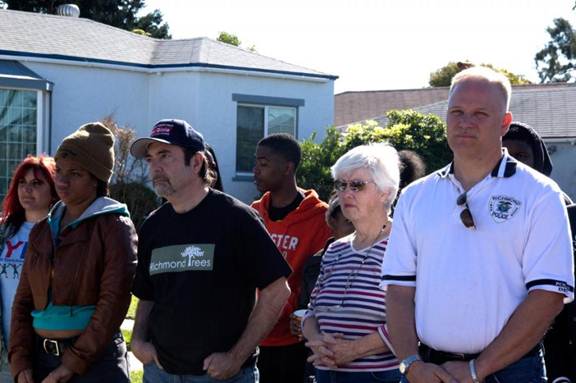
A mong the surprising benefits of tree-lined streets is lower crime, Magnus (right) said. “Because you care about how the neighborhood looks, you care about public safety,” he said – safety through beautification.
This message was especially geared toward the large youth contingency, which Supervisor John Gioia (left) said, took over Saturday’s event.
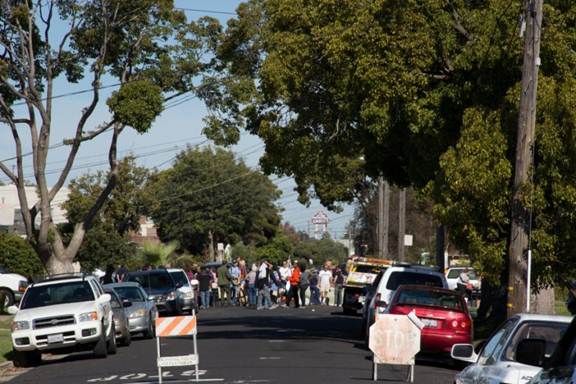
R ichmond Trees and Groundwork Richmond look to spread their impact throughout the city, especially after Richmond Trees received a $10,000 grant late this summer.
It is their hope that re-leafing Richmond will redirect the future of the city, making it a safer, healthier, greener place to live. |

